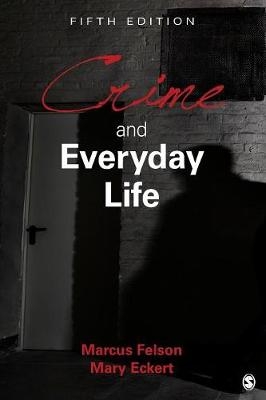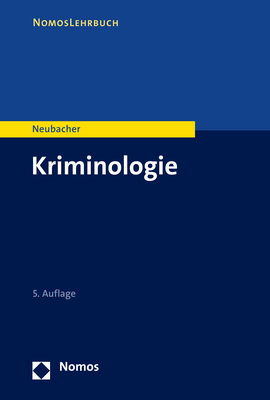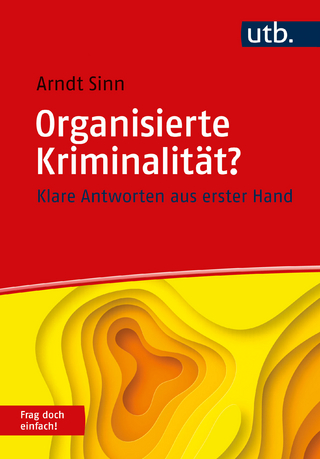
Crime and Everyday Life
SAGE Publications Inc (Verlag)
978-1-4833-8468-9 (ISBN)
- Titel erscheint in neuer Auflage
- Artikel merken
Crime and Everyday Life, Fifth Edition, offers a bold approach to crime theory and crime reduction. The text shows how crime opportunity is a necessary condition for illegal acts to occur. The authors offer realistic, often common-sense, ways to reduce or eliminate crime and criminal behaviour in specific settings by removing the opportunity to complete the act. Using a clear and engaging writing style, author Marcus Felson and new co-author Mary Eckert talk directly to the student about criminal behaviour, the routine activity approach, and specific crime reduction ideas. The authors emphasize how routine daily activities set the stage for illegal acts -- offering fascinating new ideas and examples not presented in earlier editions. Most importantly, this book teaches the student how to think about crime, and then do something about it.
Marcus Felson is the originator of the routine activity approach and of Crime and Everyday Life. He has also authored Crime and Nature, and serves as professor at Texas State University in San Marcos, Texas. He has a B.A. from University of Chicago, an M.A. and Ph.D. from the University of Michigan, and has received the 2014 Honoris Causa from the Universidad Miguel Hernandez in Spain. Professor Felson has been given the Ronald Clarke Award by the Environmental Criminology and Crime Analysis group, and the Paul Tappan Award of the Western Society of Criminology. He has been a guest lecturer in Argentina, Australia, Belgium, Brazil, Canada, Chile, China, Denmark, Ecuador, El Salvador, England, Estonia, Finland, France, Germany, Hong Kong, Hungary, Italy, Japan, Mexico, the Netherlands, New Zealand, Norway, Poland, Scotland, Spain, South Africa, Sweden, and Switzerland. He has applied routine activity thinking to many topics, including theft, violence, child molestation, white-collar crime, and corruption. Mary A. Eckert has an M.A. and Ph.D. in sociology from New York University. Her B.A. is from the College of New Rochelle. Dr. Eckert has devoted an active career to applied research in criminal justice and program evaluation. She served as research director of the New York City Criminal Justice Agency, Inc., where she authored many research reports and guided that agency’s diverse research agenda, including work on pretrial risk assessment, court-case processing, and evaluating alternative-to-incarceration programs. She also worked for the New Jersey Office of the Attorney General, with a special focus on statistical evaluation of vehicle stops to assist the New Jersey State Police in reducing the potential for racial profiling. Her work has been recognized by the New York Association of Pretrial Service Agencies and the State of New Jersey. She has been an adjunct professor at New York University, Montclair State University, and Texas State University.
Preface to the Fifth Edition
Acknowledgments
About the Authors
Chapter 1: Eight Fallacies about Crime
The Dramatic Fallacy
The Cops and Courts Fallacy
The Not-Me Fallacy
The Innocent- Youth Fallacy
The Ingenuity Fallacy
The Organized Crime Fallacy
The Big Gang Fallacy
The Agenda Fallacy
Chapter 2: The Chemistry for Crime
Risky Settings
Stages of a Criminal Act
First Three Elements of a Criminal Act
Eck′s Crime Triangle
Predatory Crimes
Calming the Waters and Looking after Places
Hot Products
The General Chemistry of Crime
Chapter 3: Offenders Make Decisions
The Decision to Commit a Crime
Offenders Respond to Everyday Cues
Odd and Bizarre Crimes
Chapter 4: How Violence Erupts
Making Students Angry in a Lab
In Real Life
Fights vs. Predatory Attacks
Violent Decisions
It Might Not Work Out Well
Chapter 5: Bringing Crime to You
Four Stages in the History of Everyday Life
Life and Crime in the Convergent City
Crime and the Divergent Metropolis
Population Density, Shifts, and Patterns of Crime
The Great Paradox: Central City Problems Versus Self-Report Evidence
Chapter 6: Teenage Crime
Perspective on Youth Crime
Teenage Zigzags
Chapter 7: Big Gang Theory
What are Gang Crimes?
Fundamentals
The Puzzle
The Reason for a Gang
Chapter 8: Crime Multipliers
One Crime Requires Another
One Crime Disinhibits Another
One Crime Advertises Another
One Crime Entices Another
One Crime Sets Up Another
One Crime Escalates Into Another
One Crime Starts A Victim Chain
One Co-Offender Attacks Another
Chapter 9: Moving Stolen Goods
The Thief and the Public
Inviting People to Steal More
It’s Easier to Sell Stolen Goods to the Poor
New Avenues for Stolen Goods
Chapter 10: Situational Crime Prevention
Four Natural Experiments
Situational Prevention and Crime Analysis
Diverse Applications of Situational Crime Prevention
Chapter 11: Local Design Against Crime
Remarkable Research on Local Supervision
Oscar Newman’s Four Types of Space
Versions of a Village
The Offender-Target Convergence Process
Seven Studies in Reducing Local Crime
Chapter 12: “White-Collar" Crime
How Offenders Get to Their Targets
Crimes of Specialized Access
Organizational Rank
The Specialized-Access Crime Grid
Chapter 13: Crime and Social Change
Technology, Rightly Understood
The Clean Water Example
A General Approach: Summing Up This Book
How to Think about Changing Crime
References
Index
| Verlagsort | Thousand Oaks |
|---|---|
| Sprache | englisch |
| Maße | 152 x 228 mm |
| Gewicht | 320 g |
| Themenwelt | Recht / Steuern ► Strafrecht ► Kriminologie |
| ISBN-10 | 1-4833-8468-3 / 1483384683 |
| ISBN-13 | 978-1-4833-8468-9 / 9781483384689 |
| Zustand | Neuware |
| Informationen gemäß Produktsicherheitsverordnung (GPSR) | |
| Haben Sie eine Frage zum Produkt? |
aus dem Bereich



